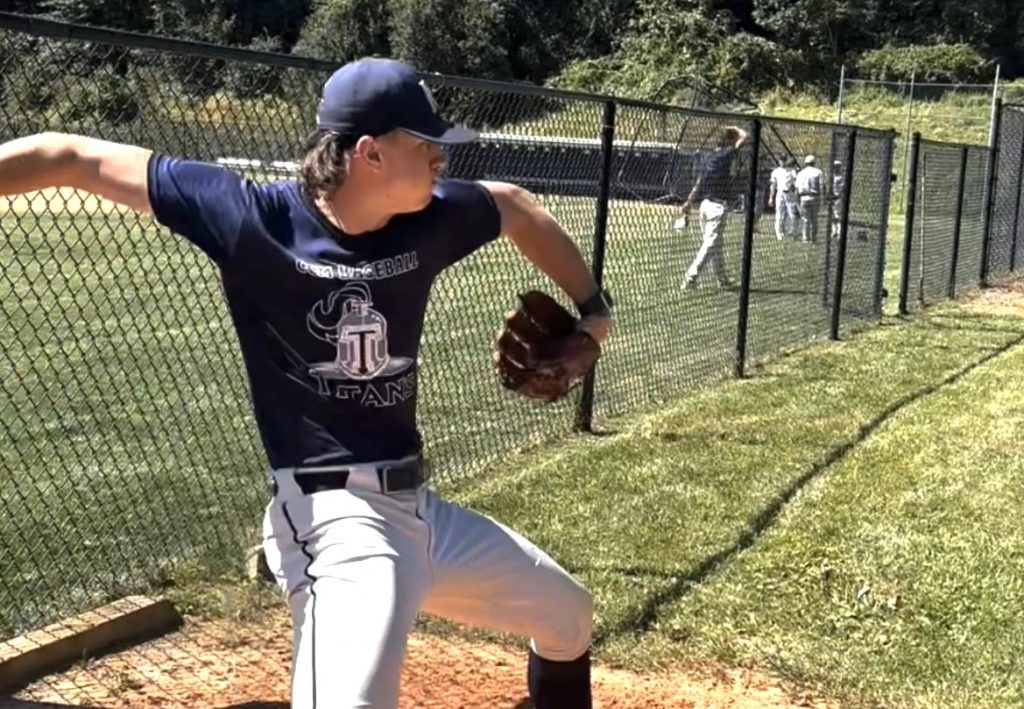
Declan Hickey, Sophomore at JUCO County College of Morris, joined us this past summer as part of our Summer Throwing Program. Previously a catcher, Declan was looking to convert himself into a pitcher that would be capable of competing at the college level. Starting the program at 6’4” 207 lbs., Declan definitely had the frame to throw hard, but was only sitting 75-78 mph when he arrived. His goals for the summer were to improve his mechanics in hopes that it could translate to more velo on the mound. Declan’s summer began with a complete assessment, including a movement screen, strength and power testing, and a mechanical breakdown of his delivery combining both motion capture and video analysis. Fast forward to this fall, Declan sat 85-87 mph, a 10+ mph pickup from where he started in June. He put in hard work all summer long, and it’s definitely paying off!
How did he do it?
Every pitcher wants to throw harder and getting them to do so during our 3-month summer program is based on targeting each athlete’s lowest hanging fruit. In Declan’s assessment, several disconnects stood out.
So, let’s review.
Mobility
Hip Strength & Stability – One of Declan’s lowest hanging fruits was the strength and stability of his hips. When assessing his lower half, we pinpointed inefficient movement strategies with his hips in all planes of motion (see below). These deficiencies were addressed in his strength and mobility programming.
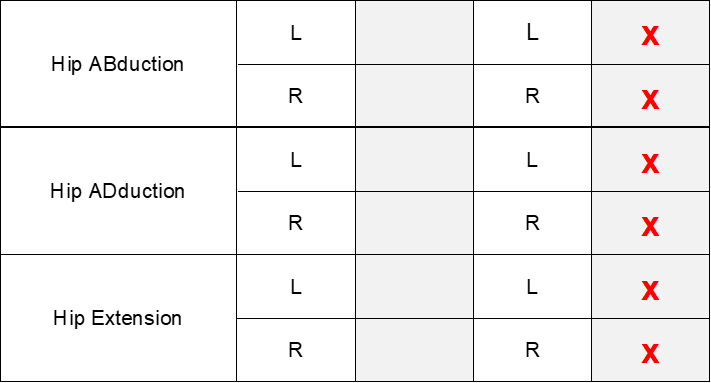
Lumbar Locked Rotation (T-spine rotation) – Lumbar locked rotation, which measures the rotation of the T-spine, was one of the upper half mobility restrictions that Declan presented with in his assessment and became one of the main focuses within his daily mobility routine. T-spine rotation or lumbar locked rotation is key for rotational athletes.

Internal Rotation – Declan had limited IR in both hips and shoulders. Although they aren’t correlated, improving the internal rotation in both instances was a main focus in his pre-workout mobility. We also needed to make sure there was no bilateral squatting due to poor hip mobility.

Strength and Power Production
Below are Declan’s est. 1RM for deadlift and bench press. You can see that his deadlift, and lower body strength, was what we consider “strong enough”. However, his bench press was only slightly past the 60th percentile. Normally, we like our athletes above the 80th percentile based on their height and weight so improving his upper body strength was a primary area of focus.
-
- Deadlift – 485 lbs.
- Bench – 173 lbs.
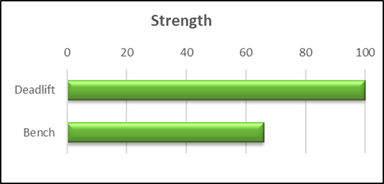
In addition, his lower body power numbers showed minimal increases in power between his more elastic CMJ jump and his strength based squat jump. So, improving his plyometric ability in his lower half would ultimately help improve overall power output. This would ultimately help with generating more power on the mound as well.
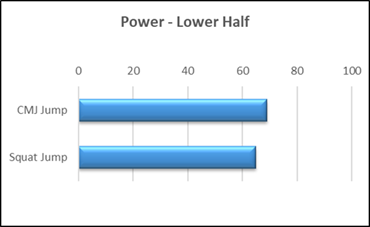
Pitching Mechanical Disconnects
Along with the video analysis, having the motion capture data is great to help pick up metrics that are difficult to see with the naked eye such as angular velocities and thus supplying us with greater insight as to what is really happening throughout his delivery.
Below are the results of Declan’s Mocap/ video analysis:
-
- Lower Half:
- Pelvic/Glute Engagement & Timing
- Lack of Back Leg Extension/Leverage
- Arm/Shoulder:
- Glove-Side Position and Timing
- Lower Half:
Now let’s dive into it…
Pelvic/Glute Engagement & Timing – Being an athlete with an ER hip bias with a fairly level pelvis, we felt Declan’s ideal loading pattern for his back hip is an externally rotated and “vertical shin”. As you can see, he wasn’t originally getting into this position – rather he was leaking energy by allowing his knee to cave in early during his descent down the mound. Through drill work, we were able to teach Declan how to properly sit into his hinge and better use the ext. hip rotation that he has as he traveled down the mound.
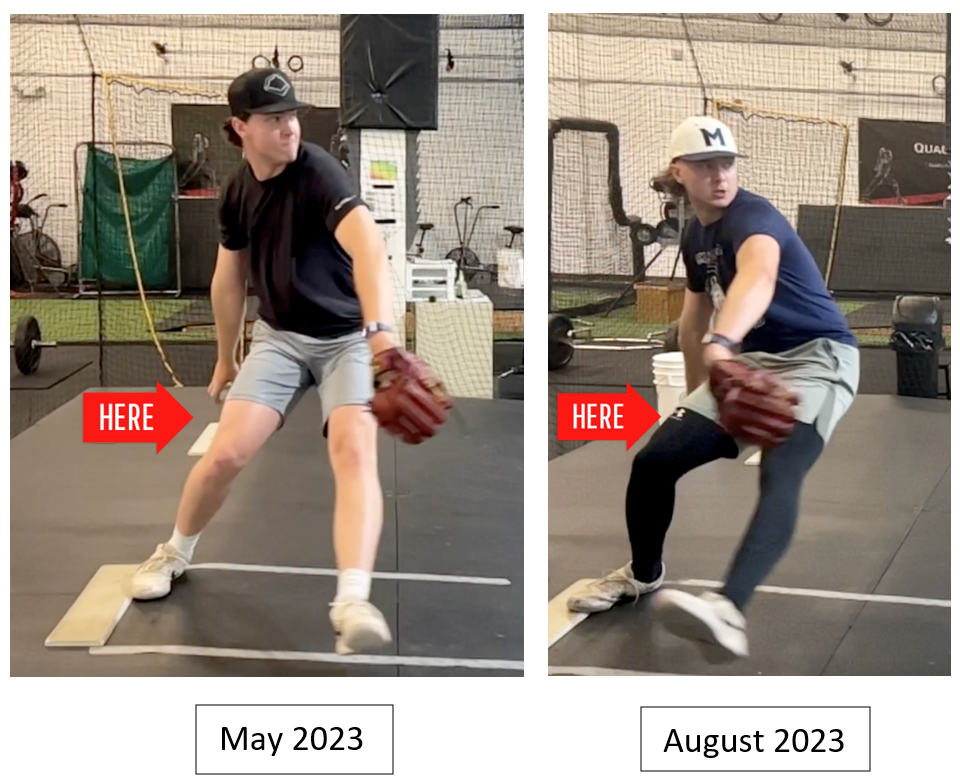
Lack of Back Leg Extension / Leverage – A lack of back leg extension doesn’t allow the athlete to stay fully grounded and be able to apply force into the ground over as long of a distance and time as possible. You can see that early on in the summer, Declan’s back leg was getting disconnected early in the delivery. This didn’t allow him to stay grounded in the throw as previously mentioned. Fixing his loading pattern (see above) helped to allow him to achieve longer connection with the ground and extension in his back leg with more force being applied into the baseball.
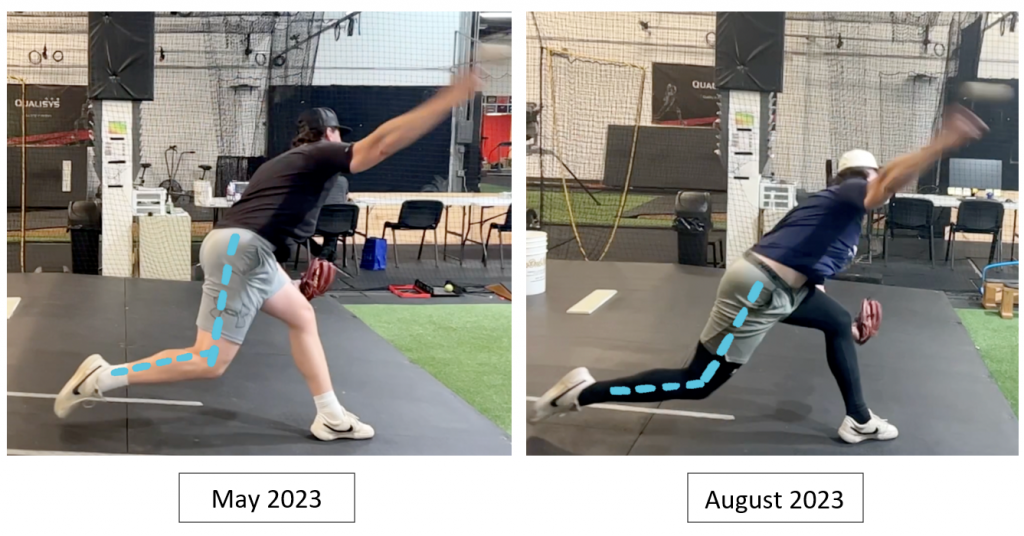
Glove-Side Position and Timing – When an athlete pulls his glove side early it can cause the entire trunk to fly open early as well. This can cause a loss of hip/shoulder separation and the athlete to fly off and lose direction. Both can be factors in a loss of velo and command which was exactly the case for Declan. An early glove pull wasn’t allowing his lower half to rotate into landing before his upper half opened up. By focusing on keeping the glove hand “quiet” until the lower half-initiated rotation, it allowed him to land in a better and more efficient position with improved separation to uncoil with at FP.
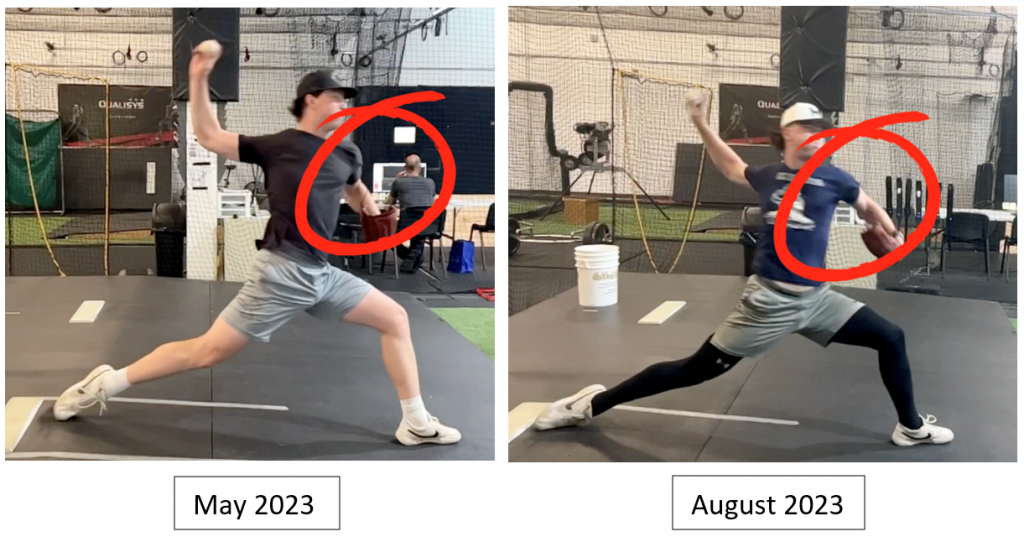
Summary
Within 3 months, filled with hard work and dedication, Declan went from sitting 75-78 MPH to sitting 85-87 mph. With his 6’4” 207 LBS frame and improved mechanics, he is now able to leverage his strength and power more efficiently into his throw. 4-year programs should keep their eye out for this JUCO product because the sky is the limit for Declan, and he is just getting started!
Great Job Declan!
By Jake Lebovitch (Pitching Coordinator and Strength Coach at RPP Baseball) and Nunzio Signore
You live too far to train with us in-house at RPP? You can now train with us on a REMOTE basis.


